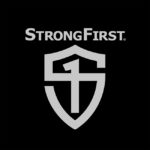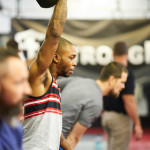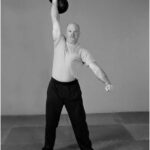As the COVID-19 quarantine closed gyms and found many of us stuck in small spaces with little equipment, kettlebells suddenly became a hot commodity. When a single piece of equipment gives you the ability to build strength and endurance in equal measure—all while taking up very little of that precious space—they are bound to be popular. But it would likely cost a small fortune to replicate the cornucopia of bells sitting idle at your gym.
For the person who knows how to use a kettlebell and enjoys working light, medium, and heavy to build strength, endurance, and perhaps even PRs, there’s a good chance your home gym doesn’t quite boast the variety of bells you’re used to. Maybe the gym closures have forced you to clean and squat mismatched double kettlebell to mimic the weight of your heavy sets. Or you’ve increased reps and decreased rest in a bid to replicate those heart-pounding swing and snatch drills. But what about the bell you often overlook because it’s just too light? That one lonely little bell that you probably bought when you first began your journey with kettlebells, long before the coronavirus. And now it often sits unused because you’ve moved beyond: pressed heavier, trained doubles, and swung the 48kg Beast. Is it possible that that very kettlebell might not be too light or too heavy but, just right? Do you have a Goldilocks bell?
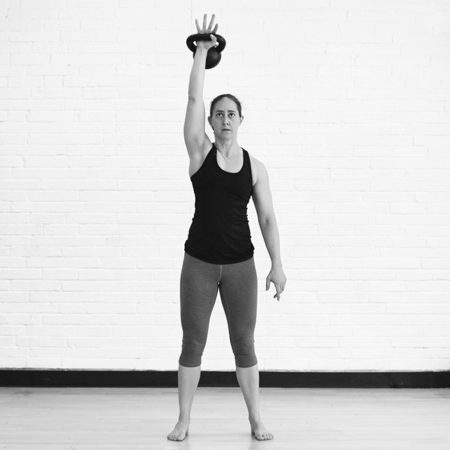
While you can perform assisted cleans, push presses, or low swings with a heavier bell; strict presses, snatches, and higher volumes of work may be out of reach. You can’t make a too-heavy bell any lighter, but you can make a too-light bell work harder for you. If the quarantine has forced you to tighten your spending a bit, you might be turning to free training resources as opposed to paying for a coach. Without someone to check your form and keep you safe, the smartest course of action is the one that keeps you injury-free. Stick with what you know. Now is not the time to learn new skills. Pay attention to how your power and form change to accommodate the same weight for multiple exercises.
Complexes are a great way to learn how to integrate a variety of form cues while safely switching gears. If the loss of working in a gym or with a coach also leaves you at a loss for how to build complexes, I offer up “The Goldilocks Protocol” as an effective way to keep training with limited gear, more specifically one light kettlebell, and a pair of dice. One die will determine which of the six basic kettlebell moves (swing, clean, squat, press, snatch, and the get-up) you will do. The other die will allow you to construct endless complexes, all with your Goldilocks bell.
The Six Variables
Here are the six variables you will use to add variety to your complexes.
- Bottoms-Up. Whether you apply this variable to just the clean or venture into squats, presses, and get-ups, the lighter weight will allow for more focused work while also maintaining a moderate volume of work.
- Isometrics. Any move can be adapted to allow for brief (or not so brief) tension holds. You can apply this variable to swings, cleans, and snatches by parking the bell after each rep and holding tension in the setup position, or at the top of the clean, press, or snatch. The bottom of the squat or any one of the various positions in the ge-tup could also be subject to the joys of holding tension.
- Ladder. A common method of adding reps up during the course of a session, ladders can be applied to each move in a sequence, a select few, or just one. If you’re tackling several skills in one complex, you could ladder just one move while keeping everything else at one. Only to apply the ladder to each move in the sequence in turn, so only one skill is laddering at a time.
- Less Rest. With a Goldilocks bell, there’s little need to park it for fast and loose drills after just a handful of reps. Instead you can work through sets of three to five or continually alternate sides as you build your complex. Adapting one of your favorite EMOM (Every Minute On the Minute) drills by increasing your reps or decreasing the time to thirty second intervals is another great option when using a lighter bell.
- Transition. Make your transitions work for you. Why relegate a swing or clean to a mere means to an end as you switch sides or prepare to press or squat? A set of swings or cleans is a great way to focus on form and work capacity on your way to the meat of your complex. An even simpler approach is to incorporate static marching or farmer’s carries for your transitions. Or you could even try swapping out the traditional for something a bit more unconventional: snatching after racking a press or adding a get-down and up between side switches creates a unique opportunity to focus on every movement of your complex.
- Unilateral. We are used to alternating from one side to the next as we practice the Simple and Sinister protocol or the SFG 5-minute Snatch Test. Instead, try completing all your work on one side before switching sides, whether it’s a combination of movements or multiple reps of just one lift. I call this one side at a time approach “unilateral” training.
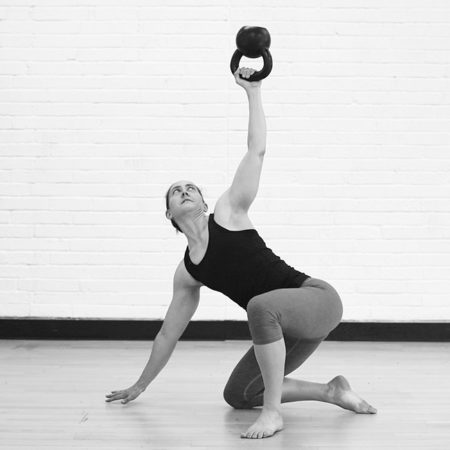
How to Implement the Goldilocks Protocol
Each session for this protocol will result in 5-9 dice rolls.
- The first roll of the die will determine how many of the six kettlebell moves you will use to construct your complex.
- Then you will roll to choose which specific exercises you will be using. If your first roll results in a higher number, this roll will be more likely to choose a move more than once. Just re-roll any duplicate exercises.
- Following your movement volume and selection dice rolls, you will roll for variables. Roll one die to determine your first variable (each number corresponds to the aforementioned list). Roll one more die to determine your second variable.
- Your final die roll will determine your volume of work. With a roll of a 1 or 2, you will perform 6 reps. A roll of 3 or 4 increases your reps to 9. And a 5 or 6 would be 12, your highest volume of reps. (Rep counts for presses and get-ups can be halved per set or added cumulatively throughout your entire workout depending on the load.)
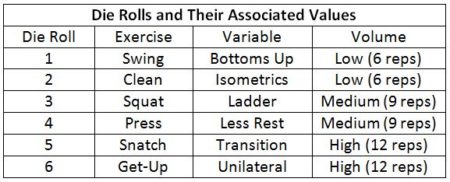
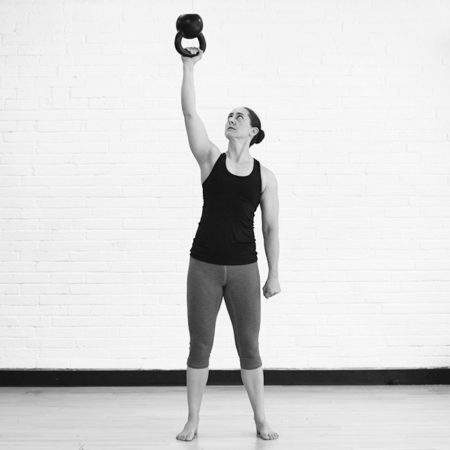
The following are examples of how to use this method for creating sessions with your Goldilocks bell.
Example #1:
- Die roll #1 (number of exercises) = 3 (three exercises)
- Die roll #2 (specific exercise #1) = 1 (swing)
- Die roll #3 (specific exercise #2) = 4 (press)
- Die roll #4 (specific exercise #3) = 5 (snatch)
- Die roll #5 (variable #1) = 3 (ladder)
- Die roll #6 (variable #2) = 6 (unilateral)
- Die roll #7 (volume) = 1 (low volume)

How to execute Example #1 as a training session:
- Start with one swing, one press, and one snatch.
- Work up to six of each adding one rep per exercise on each rung up the ladder.
- Perform the ladder all on one side before switching sides.
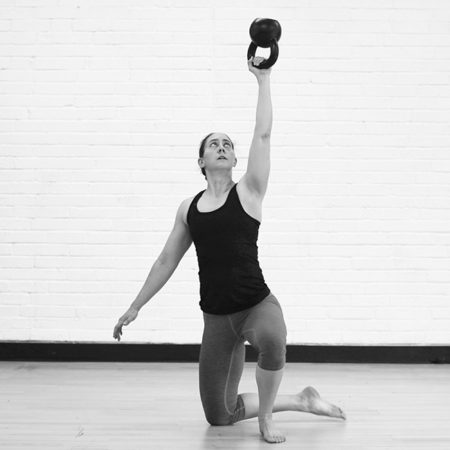
Example #2:
- Die roll #1 (number of exercises) = 5 (five exercises)
- Die roll #2 (specific exercise #1) = 5 (snatch)
- Die roll #3 (specific exercise #2) = 2 (clean)
- Die roll #4 (specific exercise #3) = 6 (get-up)
- Die roll #5 (specific exercise #4) = 1 (swing)
- Die roll #6 (specific exercise #5) = 3 (squat)
- Die roll #7 (variable #1) = 1 (bottoms-up)
- Die roll #8 (variable #2) = 2 (isometrics)
- Die roll #7 (volume) = 12 (high volume)

How to execute Example #2 as a training session:
- Split the work into two different sets
- Set 1: Perform 2 dead swings + 2 dead snatches + 1 get-up (with 5 sec holds in each position) for 6 rounds on each side
- Set 2: Perform 4 bottoms-up cleans + 4 bottoms-up front squats (with 5 sec hold at the bottom) for 3 rounds on each side
Conclusion
As you can see, with a little imagination you can create endless variations for challenging training with a single kettlebell. I have found this approach to be a gold mine during this time where access to a training facility as well as equipment is not easy.
